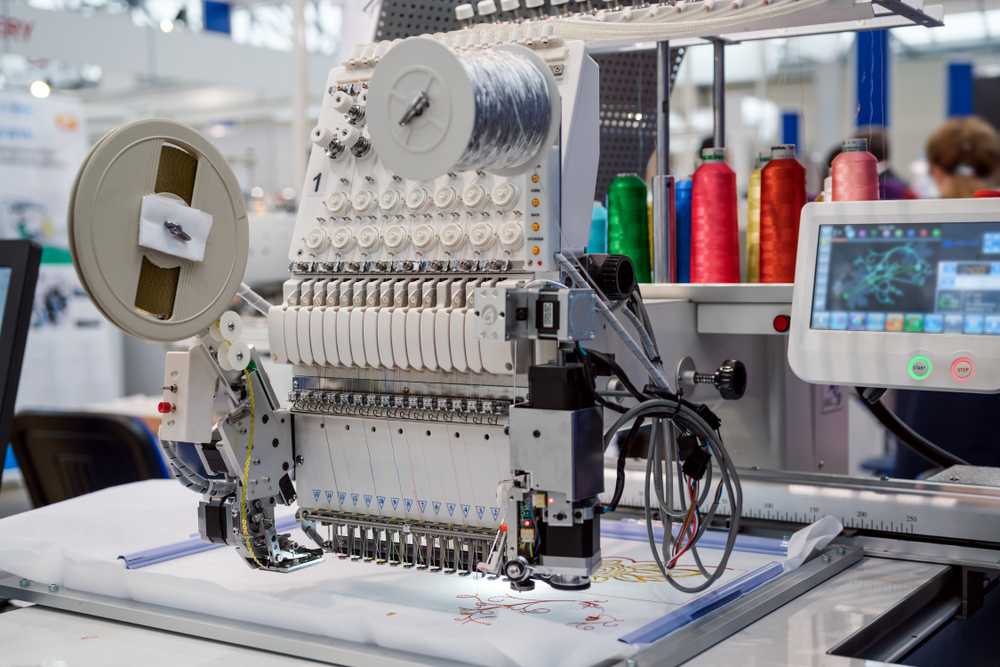Economical Digitizing for Embroidery: Precision and Detail
Wiki Article
Simplifying the Art of Embroidery Digitizing: Step-by-Step Overview
As technology proceeds to development, the digitization process has ended up being extra accessible, permitting enthusiasts to bring their complex styles to life with ease. In this overview, we will unwind the complexities of embroidery digitizing, breaking down each step carefully to enhance the process and encourage both novices and skilled embroiderers alike.Comprehending Needlework Digitizing Software
Embroidery digitizing software works as a crucial tool for transforming complex styles into electronic layouts suitable with needlework machines, promoting precise sewing and customization. This customized software program permits customers to import different image data formats, such as JPG or PNG, and transform them right into needlework machine-readable formats like DST, EXP, or PES - Digitizing for Embroidery. By making use of functions like stitch modifying, underlay choices, and string shade option, digitizing software application allows customers to regulate every aspect of the layout procedureAdditionally, advanced needlework digitizing software application offers tools for producing intricate designs, changing stitch thickness, and including complex information. Customers can also preview the style prior to stitching it out, making certain precision and lessening mistakes. Furthermore, numerous software application provide automated attributes that help streamline the digitizing procedure, conserving effort and time.
Recognizing the capacities of embroidery digitizing software is necessary for attaining premium cause embroidery projects. By understanding this device, needlework enthusiasts and specialists can unleash their imagination and bring elaborate styles to life with precision and effectiveness.

Selecting the Right Layout Documents
After acquainting yourself with the capacities of embroidery digitizing software application, the following critical action in the process is picking the right design declare your project. Digitizing for Embroidery. When picking a style declare embroidery digitizing, it's important to take into consideration the complexity of the design, the size of the last product, and the kind of textile you will be working withFor complex designs with fine details, a high-resolution picture or vector file is advised to guarantee that the needlework maker can properly duplicate the design. Furthermore, the dimension of the final product plays a significant duty in picking the appropriate design data. Bigger layouts might call for greater resolution documents to preserve quality and sharpness.
Furthermore, the type of material you will be embroidering on affects the choice of layout data. Different materials may require changes in the layout file to guarantee that the stitches are properly straightened and the style looks like meant. By thoroughly selecting the best style documents based on these factors, you can set on your own up for a successful needlework digitizing procedure.
Digitizing Tools and Methods
Utilizing specialized software program and accuracy techniques, digitizing tools are crucial in transforming detailed designs right into embroidery-ready files. Needlework digitizing software, such as Wilcom, Hatch, or Embrilliance, gives the essential platform to transform art work right into stitch information. These programs offer features like stitch editing, rug choices, and lettering tools to guarantee the design equates flawlessly onto textile.Among the vital methods in digitizing is developing a clear course for the needlework equipment to adhere to. This involves digitizing each aspect of the style with precision, figuring out stitch types, densities, and directions. By utilizing tools like digitizing tablets or software-specific plugins, embroiderers can accomplish a high level of precision in their digitized designs.
Moreover, grasping the art of rug stitching is critical for generating high quality embroidery. Underlay sewing stabilizes the textile and develops a foundation for the layout, making sure that the end product is both aesthetically appealing and resilient. By comprehending these digitizing tools and techniques, embroiderers can boost their craft and bring elaborate layouts to life with accuracy and efficiency.
Tailoring Stitch Kinds and Instructions
The choice of stitch types can substantially influence the overall look and texture of the embroidered design. By tactically integrating these stitch kinds, embroiderers can achieve deepness and measurement in their designs.Additionally, the instructions of stitches plays a vital duty in improving the aesthetic allure of the last embroidery. By experimenting with different stitch angles and patterns, embroiderers read can bring their designs to life with impressive detail and details.
Testing and Refining Your Digitized Style
To ensure the precision and high quality of your digitized More hints design, complete testing and improvement are important steps in the embroidery digitizing procedure. When you have completed the digitization of your design, it is important to test it before waging the actual needlework. Testing allows you to recognize any type of prospective issues such as string breaks, sew thickness issues, or style distortions that might affect the last outcome.
After screening, it is necessary to improve your digitized layout based upon the comments from the test you could try these out sew-out. This may involve tweaking sew settings, readjusting densities, or making adjustments to the general layout to achieve the wanted end result. By iterating through screening and refinement, you can tweak your digitized layout to perfection before progressing with the real embroidery procedure.
Conclusion
Finally, understanding the art of embroidery digitizing calls for a complete understanding of the software program, selecting the right style documents, utilizing digitizing devices and techniques, tailoring stitch kinds and instructions, and testing and refining the digitized layout. By following these steps, embroiderers can simplify the digitizing process and develop high-quality stitched designs with accuracy and efficiency.Report this wiki page